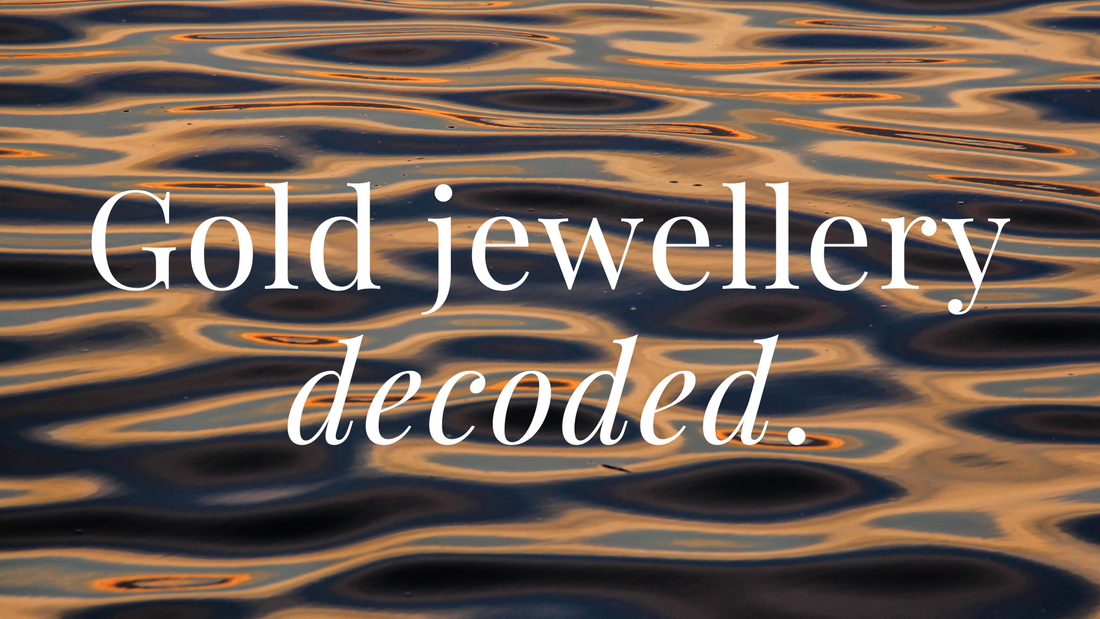
Gold Jewellery Decoded: Vermeil vs Gold-Plated vs Gold-Filled vs PVD
If you’ve ever wondered what the difference is between gold vermeil, gold-plated, gold-filled, and waterproof gold jewellery, you’re not alone. These terms pop up everywhere — often without clear explanations. And when you're investing in jewellery that’s meant to last (and look good doing it), understanding the materials matters.
At Aurora Wilde, we use high-quality 18k gold plating and modern waterproof technology, so your jewellery stays looking beautiful for longer. But we also believe in transparency — so here’s your no-nonsense guide to what these gold terms actually mean.
1. Gold-Plated Jewellery
What it is: Gold-plated jewellery has a thin layer of gold (usually between 0.5–1 micron thick) of genuine gold electroplated over a base metal, such as brass or stainless steel.
Pros:
✔ Affordable
✔ Lightweight
✔ Great for trend-led pieces
Cons:
✖ Can wear off over time
✖ May tarnish faster if not protected
Best for: Fashion jewellery you wear occasionally — or, better yet, pieces with an anti-tarnish or waterproof finish, like ours at Aurora Wilde.
2. Gold Vermeil (Pronounced: Ver-MAY)
What it is: A thicker layer of gold (minimum 2.5 microns) plated over sterling silver. This makes it legally “vermeil” in the US. In the UK, however, there is no legal definition of how thick vermeil needs to be and so it can vary from 1 micron (which can be the same as some gold-plated jewellery) to 3 microns.
Pros:
✔ Higher quality than standard gold-plated
✔ Made with precious metals
✔ A good balance of luxury and affordability
Cons:
✖ Still wears down with daily wear
✖ Slightly more expensive than gold-plated
Best for: Elegant pieces you plan to wear often — but still want to keep budget-friendly.
3. Gold-Filled Jewellery
What it is: A thick bonded layer of gold (usually 5% of the item’s total weight) that’s mechanically fused to a base metal, often brass.
Pros:
✔ More durable than gold-plated or vermeil
✔ Great for sensitive skin
✔ Keeps its shine longer
Cons:
✖ Heavier feel compared to other options
✖ Less common in delicate designs due to how it is made
✖ Usually limited to the US market
Best for: Classic styles or sentimental pieces you’ll wear daily for years.
4. Waterproof or Anti-tarnish Gold (like PVD aka Physical Vapour Deposition)
What it is: PVD is a relatively new coating process that bonds gold to stainless steel using a vacuum technique, creating a finish that’s highly durable, waterproof, and tarnish-resistant. Similarly, a lot of anti-tarnish jewellery including some of the materials we use to make AW jewellery, is thick gold-plating over brass with an e-plating anti-tarnish coating. This ensures pieces stay shiny and tarnish-free for longer, as well a gives them more water-resistance than regular gold-late and more expensive vermeil options!
Pros:
✔ Exceptionally long-lasting
✔ Waterproof and sweatproof
✔ Scratch-resistant
Cons:
✖ Not solid gold
Best for: Everyday wear, active lifestyles, and modern jewellery that lasts without compromising on luxury look and feel. Aurora Wilde’s waterproof and water-resistant jewellery uses PVD or e-plating as anti-tarnish coating for exactly this reason.
Final Thoughts: What Should You Choose?
It really depends on your lifestyle, budget, and how often you wear your jewellery.
-
If you're after affordable style with a little more staying power, look for vermeil pieces with anti-tarnish finishes.
-
For heirloom feel without the solid gold price tag, gold-filled or PVD-plated are excellent choices.
-
If you want jewellery you never have to take off? PVD wins for durability.
At Aurora Wilde, we combine 18k gold plating with anti-tarnish and waterproof finishes so you can wear your jewellery every day — confidently, beautifully, and without the maintenance fuss.




